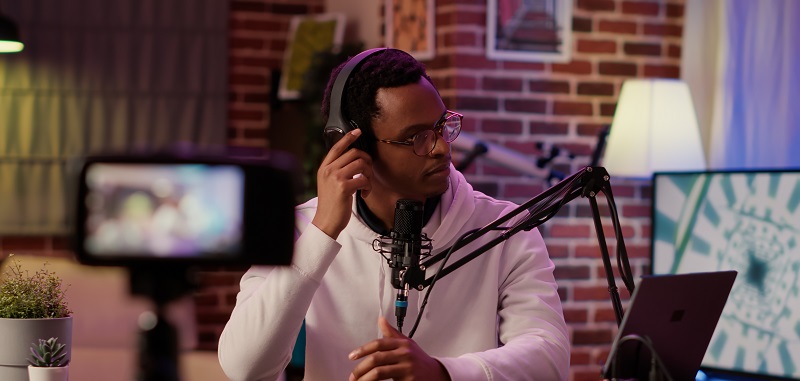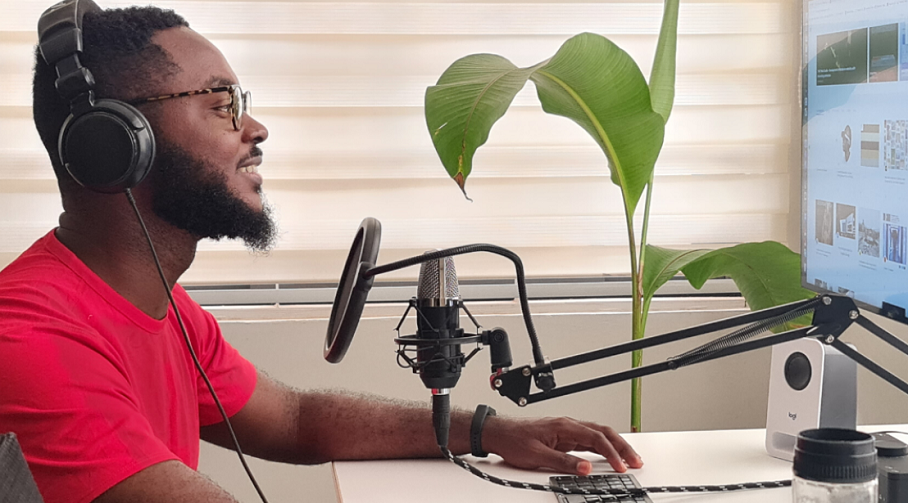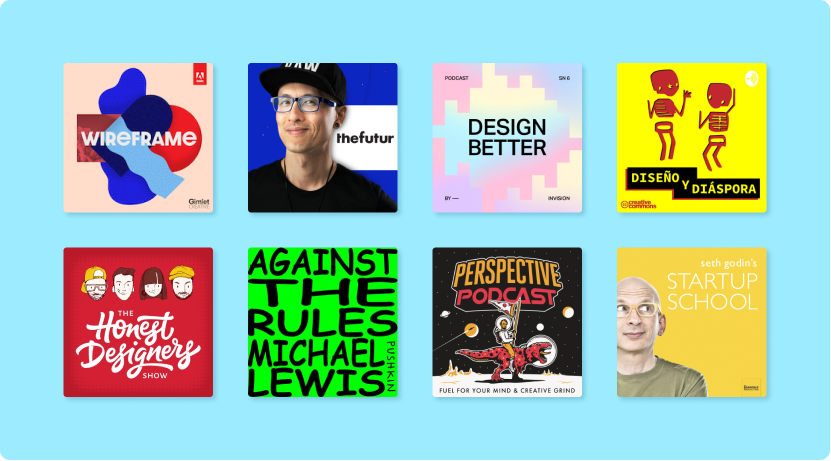How to Start a Podcast: Complete Step-by-Step Guide
Launching a podcast can feel overwhelming if you’re doing it by yourself, but you don’t have to do it alone.
For sometimes now, Wokpa has helped hundreds of podcasters launch their podcast, and we’ve used everything we’ve learned to create this guide.
We broke this guide into 10 easy steps that give you everything you need to confidently create, launch, monetize and grow a great podcast!

Table of Contents
- How to Start a Podcast in 10 Steps
- Free Podcast Resources
- Frequently Asked Questions
How to Start a Podcast in 10 Steps
- Develop a podcast concept
- Choose your podcast format
- Setup podcast equipment
- Choose your podcast software
- Record your first episode
- Edit your audio
- Create podcast artwork
- Set up podcast hosting
- Get listed in podcast directories
- Launch and grow your show
Before we go further, you may want to ask, what is a Podcast?
Imagine having a friend with a captivating voice and a mind full of interesting stories, ideas, or knowledge. Now, picture them sharing those stories with you in a casual conversation, except it’s not just you listening – anyone with an internet connection can tune in! That’s the essence of a podcast.
Think of it like an audio show, similar to radio but on-demand. You choose what you want to listen to, whenever you want.
Podcasts are like portable, on-demand radio shows you can listen to anytime, anywhere.
Podcasts can cover any topic under the sun, from true crime investigations to hilarious comedy sketches, in-depth interviews with fascinating people, or even deep dives into your favourite hobbies.
Here’s what makes podcasts so cool:
- They’re personal: The host often feels like a friend sharing their passion with you.
- They’re convenient: Listen while you commute, do chores, exercise, or unwind before bed.
- They’re diverse: There’s a podcast for pretty much everything you can imagine!
- They’re often free: Most podcasts are free to listen to, although some offer premium content for a subscription fee.
Click here to listen to a sample Podcast
Now that you know what Podcast is, let’s delve into how you can start.
1. Develop a podcast concept
Choosing the right podcast concept for your new podcast is a big part of attracting the right listeners and staying committed to your show.
Follow these tips to narrow your niche and clarify your message.
Define your goals
Why do you want to start a podcast? It’s important to know your why, even if it’s to have fun with friends.
Some good reasons for starting a podcast are:
- to generate leads for a business
- be recognized as an industry leader
- share an important message
Podcasting has a lot of benefits for brands and businesses, but it’s important to be realistic about your goals. While some podcasters shoot to fame, most have a small target audience that they build over time.
Pick a podcast theme or topic
You should feel excited to regularly discuss and research your podcast topic. The more you enjoy your topic, the less likely you’ll experience podfade.
Once you have some ideas, do some market research to survey the competition in your genre.
Search your show’s topic in Apple Podcasts. Listen to a few episodes and ask yourself what you could do differently.
There’s always a unique angle or perspective to offer.
PRO TIP
To test out your own podcast concept, try to come up with ten episode ideas. If ideas don’t come easily, you might want to change topics.
Make it specific
When you zero in on a niche, you attract a more specific and engaged audience. Podcasts that appeal to a broad audience can end up reaching fewer people.
People are also more likely to recommend a niche podcast to a friend than a generic one.
To make your podcast niche, focus on a sub-category or sub-demographic.
Drill down on what makes your podcast different. What unique perspective can you bring to your podcast’s topic?
EXAMPLES OF FINDING A NICHE
- Mental health → Mental health for lawyers
- Drones → Drone racing
- Nutrition → Nutrition for diabetics
- Personality tests → Enneagram in the workplace
- Business → How to start a nonprofit
Name your Podcast
Your podcast name is a core part of your brand. It makes a strong first impression on listeners and sets the tone for your podcast.
Here’s Apple’s advice on how to name your podcast:
It’s important to have a clear, concise name for your podcast. Make your title specific. A show titled Our Community Bulletin is too vague to attract many subscribers, no matter how compelling the content.
Pay close attention to the title as Apple Podcasts uses this field for search.
Podcast names should have the following characteristics:
- specific and succinct
- available
- memorable
- similar to your business name or brand
Once you have a title in mind, run it through a podcast name checker to ensure the social media accounts and domains are available. You also don’t want to use someone else’s podcast name.
2. Choose your podcast format
Your format should complement your podcast and feel sustainable.
Ask yourself what gives you energy. Do you love connecting with podcast guests, or do you feel your best going solo?
If you choose to have cohosts, try to keep your group small. Podcasting with more than two or three people makes scheduling a challenge.
Keep in mind that some shows require more production than others. For instance, fiction podcasts usually require more editing than interview podcasts.
These are some common podcast formats:
- interview podcasts
- co-hosted podcasts
- scripted non-fiction
- news recap
- educational podcasts
- scripted fiction
Optimal podcast episode length
Make your episodes as long as they need to be and no longer.
Some podcasts are less than five minutes long, and others have episodes the length of a short audiobook. Here are the most common episode durations:
- less than 10 minutes (14%)
- 10—20 minutes (15%)
- 20—40 minutes (31%)
- 40—60 minutes (22%)
- Over 60 minutes (7%)
Podcast publishing schedule
Podcasting can be a full-time job or something you do on the side. You might decide to publish daily or every two years like Serial.
We recommend publishing once a week to develop a connection with listeners and create the habit of producing consistent content. These are the most common publishing frequencies:
- 0—2 days (7%)
- 3—7 days (36%)
- 8—14 days (39%)
- 15—29 days (17%)
- Over 30 days (1%)
3. Setup podcast recording equipment
You don’t have to buy expensive equipment to have good audio. Lots of popular podcasts have a basic setup. Infact, with Wokpa, you don’t need a microphone to record a Podcast.
Let’s review what to look for in a podcast microphone. Then, we’ll make our top podcast equipment recommendations.
Best podcast microphones
A good podcast mic enhances your audio quality and makes editing easier. Less background noise in your recording means less editing on the backend.
Here are a few to consider before getting your first podcast mic. Our top recommendation is the Samson Q2U which you can buy on Amazon for about $70.
Dynamic or condenser
Dynamic microphones work best for podcasting. They pick up lower frequencies and have less sensitivity. This means you’ll have less background noise to edit out later.
Condenser mics have more sensitivity and pick up a wider range of frequencies. Sensitivity is good for recording music but isn’t ideal for spoken word.
Podcast mics have two types of connections: XLR or USB.
XLR mics give you maximum flexibility. There are a lot of XLR mics to choose from, and they usually have a long life. But XLR mics require an interface or mixer to hook up. This can get expensive for beginners.
USB microphones are less expensive and plug directly into your computer. You can also run it through an interface if you record with multiple people.
USB mics are affordable, practical, and sound great. This mic is the best option for the majority of podcasters.
TOP MIC RECOMMENDATIONS:
- Samson Q2U | $70
- Podmic | $100
- Shure SM7B | $400
Don’t forget that on Wokpa, you don’t need a microphone or studio set-up to start podcasting.
4. Choose your podcast software or hosting platform
This where Wokpa comes in…
Wokpa is the leading African podcast hosting platform designed to empower creators to launch, manage, and grow their podcasts.
With Wokpa, you can begin your Podcast journey and make money from day 1. Visit www.wokpa.app now or book a DEMO to get started.

5. Record your first episode
Recording your episode requires a little preparation on the front end. Follow these three steps to set yourself up for success.
– Write a podcast outline
Rambling is one of the most common mistakes new podcasters make, and the best way to fight this tendency is by writing a podcast script or outline.
Even taking a few minutes to jot down a list of bullet points will dramatically improve the flow of your episode.
If you’re working with a co-host, share the outline with them so you can work on it together.
– Pick a good place to record
If possible, record in a quiet room with lots of furniture, curtains, rugs, or carpet.
Noise bounces off of hard, flat surfaces, so eliminate these where you can.
6. Edit your audio
Podcast editing is primarily for cleaning up the audio and making basic changes to the structure. Try to keep the process simple. If you focus too much on production, you’ll get overwhelmed.
Wokpa recording feature has audio editing inclusive so you can do everything in a single platform stress-free.
On Wokpa, you can prepare your script and record at a go.
7. Create podcast artwork
Your podcast cover art is the first thing potential listeners see on Apple Podcasts or social media.
Good artwork implies quality content, and 62% of new listeners are more likely to listen to a podcast if they like its cover art.
Your podcast artwork should follow these technical specifications;
- square Image (3000 x 3000 pixels)
- resolution of 72 dpi
- PNG or JPEG file types
- colorspace RGB
5 Tips to make your podcast artwork stand out
Follow these five tips to make artwork that stands out in podcast directories and attracts new listeners.
- Visually communicate the subject of the podcast. Potential listeners should know what your podcast is about just by looking at your artwork. Too much symbolism or ambiguity can turn people away.
- Design for a variety of sizes. You will use your artwork across several mediums and platforms, so it must look good even at 55 x 55 pixels.
- Don’t use too many words or fonts. Don’t use more than four words on your cover art, and make sure it’s legible even in small sizes. You should also limit yourself to two complementary fonts.
- Avoid podcast imagery. Just as movie covers don’t have pictures of DVDs and TV sets, your podcast cover art shouldn’t show podcasting equipment. You don’t need to remind people that they’re listening to a podcast!
- Use consistent branding. Your podcast artwork is a part of your overall branding. Feel free to make subtle changes to artwork to fit various layouts and pages, but the imagery should stay consistent.

Tools to design your podcast artwork
Adobe Create Cloud Express
Adobe Creative Cloud Express (previously Adobe Spark) is a free service similar to Canva.
Create a free account and browse a catalog of templates, text styles, and color pallets to design your unique podcast logo. When you’re done, download your file as a .jpg or .png.
Fiverr
Fiverr is a more affordable way to outsource your artwork. Prices vary based on the experience of the designer.
Make sure you pick a designer with examples of good artwork in their portfolio.
99Designs
99Designs lets you run a contest where designers compete to create the best design. Designers submit their ideas based on your guidelines, and you pick your favourite!
8. Set up podcast hosting
A podcast hosting service like Wokpa stores your audio files and distributes them to podcast platforms so listeners can find your show in directories like Apple Podcasts.
You can try Wokpa free for 30 days to see how you like it.
9. Get listed in podcast directories
Podcast directories, like Apple Podcasts, Spotify, etc are a centralized place for podcast listeners to find new shows.
Getting listed in the top podcast directories is a critical part of your podcast marketing strategy. Most of your new listeners will find your podcast through these directories.
Interestingly, you can submit your Podcast through Wokpa dashboard.
10. Launch and grow your show
When it’s time to launch your podcast, you have two options. Choose whichever one feels best to you.
Strategy #1: The grand opening
A grand opening is when you build hype for your show before its launch. This is the approach used by most podcasters with an existing following.
Pick a launch date a few weeks away and reach out to people who might be interested.
You can pay for ads, submit to Apple Podcasts’ New and Noteworthy, or reach out to publications.
Strategy #2: The soft open
A soft open is more discreet. With this method, you publish episodes as if people are listening, but wait to promote your episodes.
This strategy lets you get comfortable, iron out kinks, and overcome imposter syndrome.
When you see your podcast succeed in a lower-pressure environment, promoting it more confidently is easier.
Imposter syndrome
A lot of podcasters feel like a fraud when they first start. Maybe you dislike your voice or feel inadequate to speak on your topic.
It’s easy to side-line yourself, but you have a valuable perspective to offer. Know that this is a normal phase of podcasting that gets easier.
Celebrate your launch!
If you’ve made it this far and are ready to publish your episode, we encourage you to submit it soon and celebrate your accomplishment.
Launching your first podcast is an achievement, so congratulations from the entire Wokpa team! We can’t wait to see how far your podcast takes you.
Do you have any question or support to fully get started? WhatsApp +234 704 700 1133 and schedule a DEMO.
Frequently Asked Questions
How much does it cost to start a podcast?
The cost of starting a podcast varies depending on the quality of the podcast equipment you purchase. If you already have a computer and start with more affordable options, you can spend $60-100 on a microphone and headphones. If you purchase an audio interface, podcast recording software, and higher-quality gear, you can spend over $1,000. However, as stated above, it cost you NOTHING to start on Wokpa. You can start with FREE 30 day trial.
Do podcasters make money?
Yes, podcasters can make money through various direct and indirect monetization methods, including sponsorships, paid subscriptions, selling physical products, tips and donations, pragmatic ads and online courses. However, the amount earned depends on factors such as the size and engagement of the audience, as well as the chosen monetization strategies. Nonetheless, with proper planning and execution, podcasting can be a lucrative venture.
How do I start a podcast with no experience?
Starting a podcast without experience requires a solid marketing strategy to attract new listeners. The best podcast marketing channels include social media, getting listed in directories like Apple Podcasts and Spotify, optimizing new episodes for SEO, and publishing consistently.
